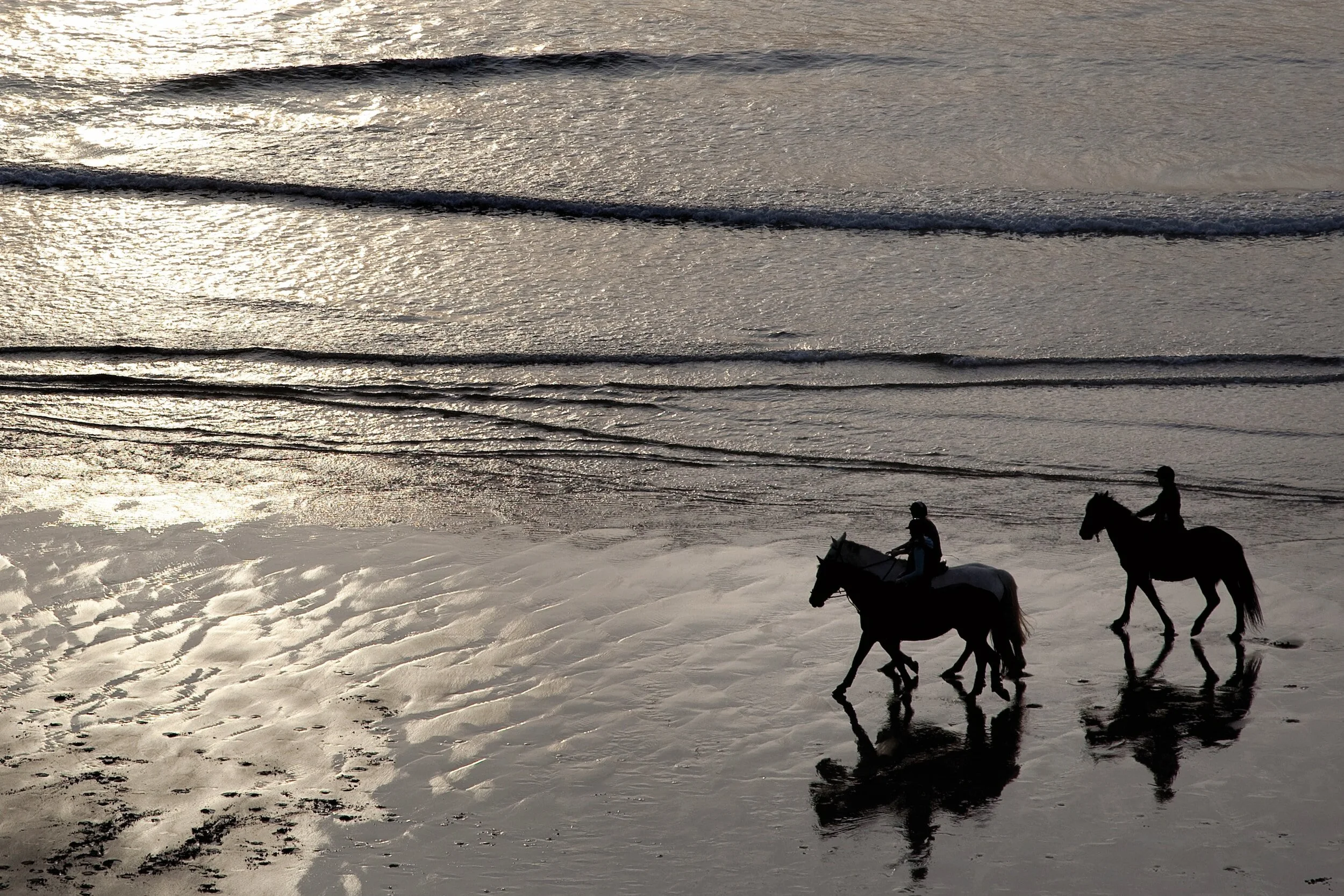Teaching a Horse to Respond to Seat Cues
Nestled just minutes away from the San Francisco Zoo, Ocean View Stables offers not only breathtaking guided trail rides down to the beach but also valuable lessons on horsemanship. One of the foundational lessons for both rider and horse is learning and responding to seat cues. In this blog, we'll explore the art and science of teaching a horse to respond intuitively to the subtle shifts of the rider's weight.
What are Seat Cues?
Seat cues are signals given by the rider's seat bones, pelvis, and core muscles to communicate with the horse. They play a crucial role in steering, regulating speed, and executing specific movements. Mastering seat cues allows riders to communicate with their horses seamlessly, often without the need for reins or voice commands.
Steps to Teach a Horse to Respond to Seat Cues:
Build a Strong Foundation: Before introducing seat cues, ensure your horse is comfortable with basic commands like walk, trot, and stop using reins and voice.
Establish a Balanced Seat: The rider's posture is crucial. Sit deep in the saddle, keeping your spine straight and shoulders relaxed. A balanced seat ensures clear communication and prevents unintentional cues.
Start with Basic Transitions: Begin with walk-to-halt transitions. Use a slight backward shift of your weight (imagine sitting more on your back pockets) to signal a halt. Reward your horse with praises or a pat when they respond correctly. With time, your horse will begin to anticipate the halt from your seat cue even before you use the reins.
Introduce Speed Regulation: To ask your horse to move forward or speed up, gently rock your pelvis forward, allowing your seat bones to drive into the saddle. To slow down, shift your weight slightly back and use your core muscles to stabilize your seat, discouraging forward motion.
Turns and Lateral Movements: To turn, the rider can use a combination of weight distribution and leg cues. For a left turn, for example, the rider might slightly weight the left seat bone and proper leg cues.
Practice Consistency: Always be consistent with your cues. If you give a seat cue for halt, ensure you’re not inadvertently squeezing with your legs, which would be a conflicting signal.
Reinforce with Voice or Hand Cues: Initially, combine your seat cues with voice or light rein cues. This helps the horse understand the new seat signals. Gradually, as your horse becomes more responsive to the seat, you can reduce reliance on other cues.
Stay Patient and Positive: Every horse learns at their own pace. Celebrate small victories and ensure your training sessions are positive and encouraging.
Experience the Magic at Ocean View Stables:
While the journey of teaching a horse to respond to seat cues can be challenging, the reward of a deep, non-verbal connection with your horse is unparalleled. And there's no better place to embark on this journey than Ocean View Stables. With its proximity to the beautiful San Francisco Zoo and the chance to ride along picturesque beach trails, it's a haven for equestrians.
Whether you're a novice rider or working towards a competition goal, Ocean View Stables offers lessons that can help your horsemanship grow. Plus, the guided trail rides provide a serene escape from the hustle and bustle, allowing riders to experience the calming rhythm of the waves and the majesty of the horizon.
In conclusion, understanding and mastering seat cues is a beautiful dance between rider and horse. With patience, consistency, and the right guidance, this dance can become second nature.
Happy riding!


